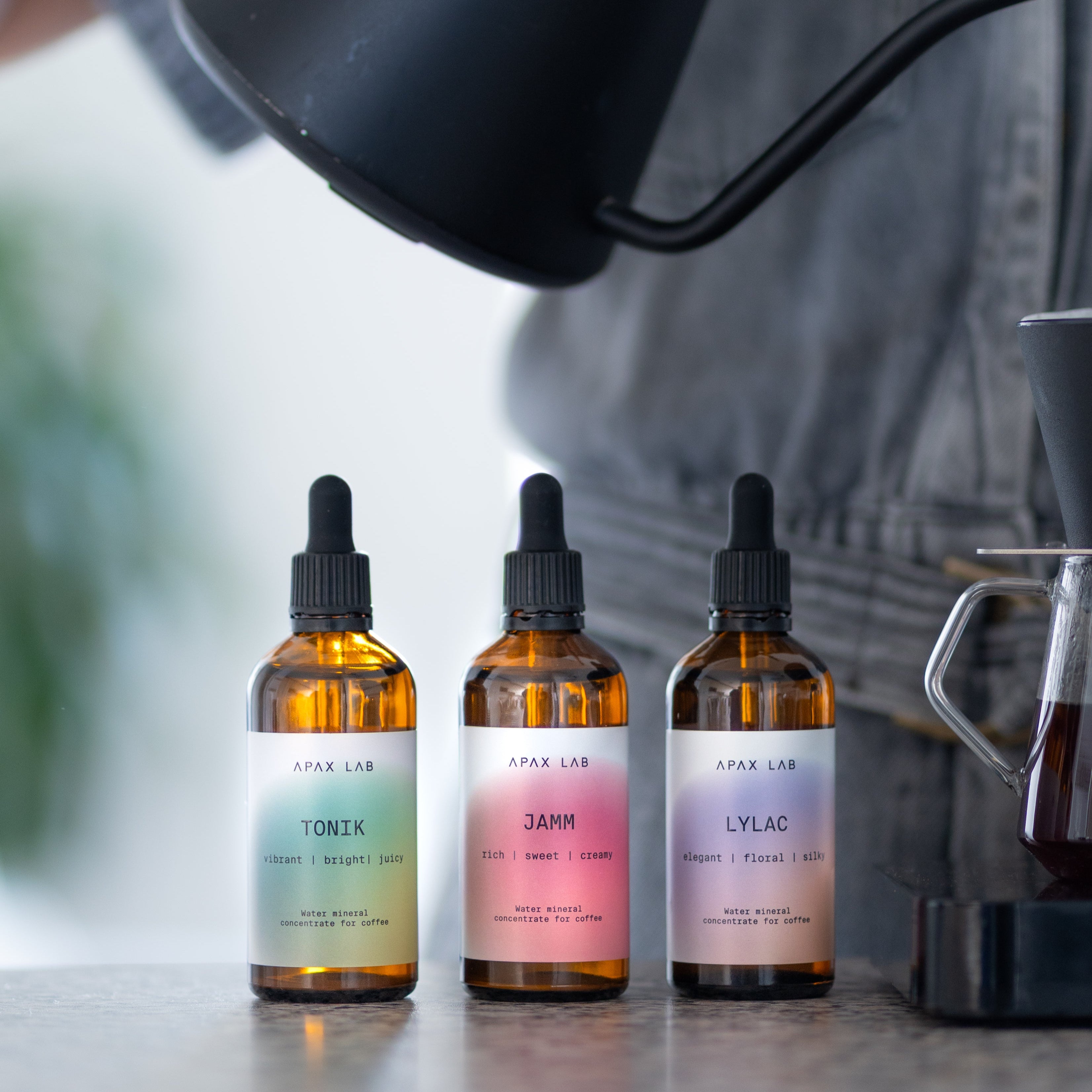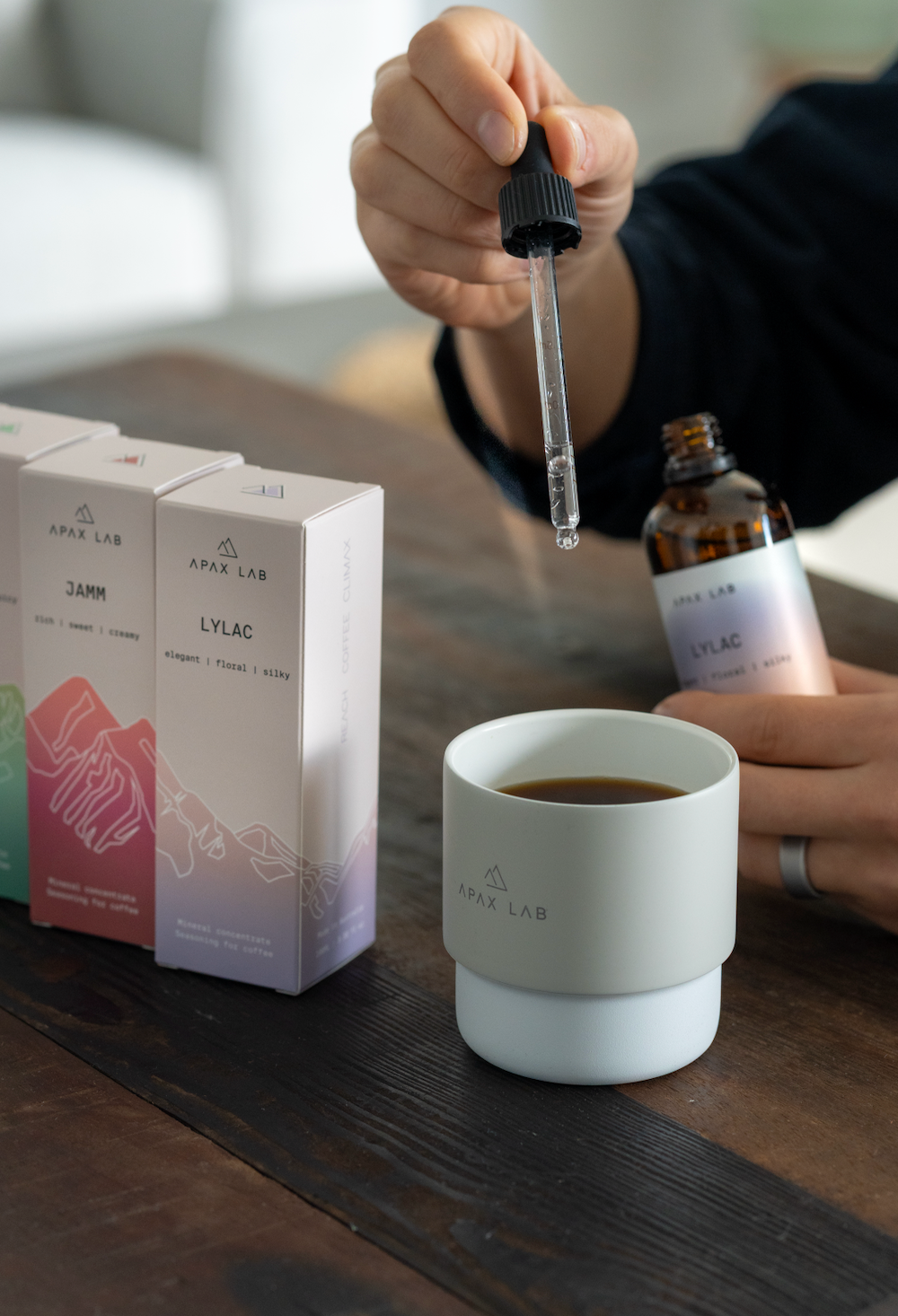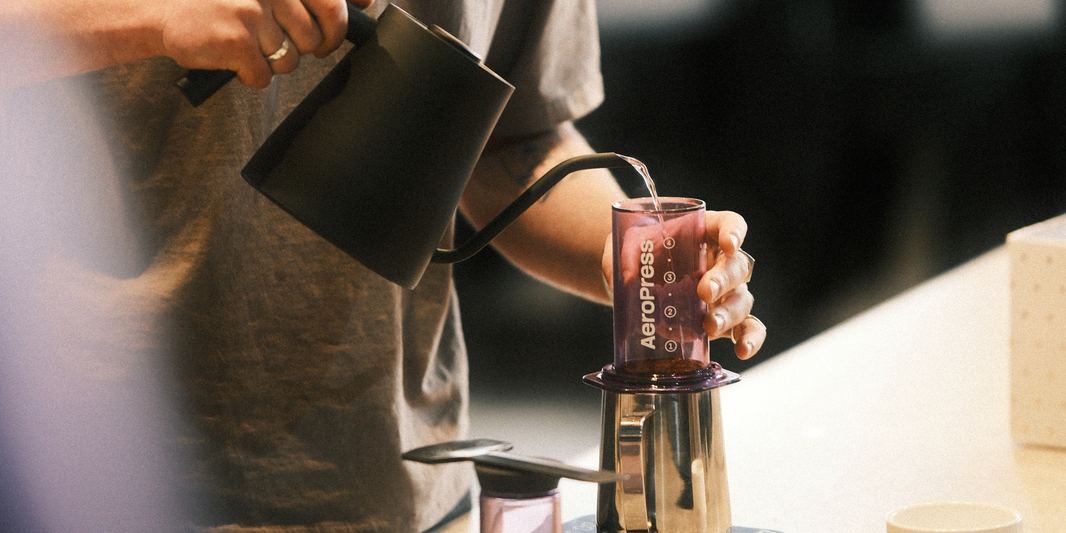Water is a crucial element in coffee brewing, directly impacting the flavours you experience in every cup. With espresso consisting of 90–92% water and filter coffee around 98–99%, it’s clear that water is the most influential variable in brewing.
While there’s ongoing debate about the exact role of water in the extraction process, it’s widely accepted that the mineral and ionic composition of water significantly affects the flavour profile of coffee.
At APAX LAB, we view minerals in water as the seasoning in your favourite dish—enhancing intensity, balance, and complexity. Our approach is rooted in sensory analysis, guided by a blend of intuition and science, to create the perfect water recipes for coffee.
This guide will walk you through the basics of water chemistry for coffee brewing and share our tried-and-tested methodology for preparing water concentrates, whether for home brewing, cafés, or competitions.
What You Need
- Precision Scale (0.01g accuracy)
- Demineralised/Distilled/Pure Water
-
Dry Mineral Powders:
- Magnesium Sulfate (MgSO₄)
- Calcium Chloride (CaCl₂)
- Sodium Hydrogen Carbonate (NaHCO₃)
- 4 x 1L Containers
- Plastic Syringe
- TDS (Total Dissolved Solids) Pen
Methodology
The goal of making your own water is to control the mineral content precisely. Start with base water that contains no minerals, so you have full control over what goes into your final brew.
Step 1: Understanding Molar Mass (MM) and PPM
Before you begin, it’s essential to understand molar mass (MM) and parts per million (PPM):
- Molar Mass: This is the weight of one mole of a substance, measured in grams per mole (g/mol). It tells you the mass of the individual molecules or atoms in the substance.
- PPM: Parts per million is a unit used to express the concentration of a substance in a solution. For instance, a 1000 ppm solution contains 1000 milligrams of the substance per litre of water.
Step 2: Preparing Your Concentrates
Here’s how to create 1000 ppm concentration solutions for the minerals used in your water:
-
Calcium Chloride Dihydrate (CaCl₂·2H₂O):
- Molar Mass: 130.02 g/mol
- Recipe: Weigh out 1.30 g of CaCl₂·2H₂O and add 998.7 g of pure water to make a 1000 ppm solution.
-
Magnesium Sulfate Heptahydrate (MgSO₄·7H₂O):
- Molar Mass: 246.52 g/mol
- Recipe: Weigh out 2.46 g of MgSO₄·7H₂O and add 997.54 g of pure water to make a 1000 ppm solution.
-
Sodium Hydrogen Carbonate (NaHCO₃):
- Molar Mass: 84.01 g/mol
- Recipe: To achieve a 1000 ppm concentration of bicarbonates, double the amount of NaHCO₃. Weigh out 1.68 g of NaHCO₃ and add 998.32 g of pure water.
Note: Your mineral may have a different hydration level, which will affect its molar mass. Adjust accordingly using the formula: (Desired Concentration/Measured Concentration) x Initial Weight. Also, TDS readings may vary based on solution temperature.

Creating and Tuning Your Water
- Choose Your Recipe: Decide on the desired mineral profile, e.g., 100 ppm water with 20 ppm of each of five minerals.
- Combine the Concentrates: Measure and combine the required amounts of each concentrate in an empty container.
- Dilute with Pure Water: Top up the mixture with pure water, ensuring precise measurements for consistency.
- Brew and Taste: Use this water to brew your coffee, ideally conducting a blind taste test if comparing different water profiles.
- Adjust as Needed: Tweak your recipe by changing one variable at a time to better understand the impact of each mineral on your coffee’s flavour.
Recommended Water Recipes
Here are some tried-and-tested recipes tailored for different coffee processing methods:
-
For Washed Processed Coffees:
- Recipe: 60 g Magnesium Sulfate (MgSO₄), 30 g Calcium Chloride (CaCl₂), 10 g Sodium Hydrogen Carbonate (NaHCO₃)
- Method: Combine the above concentrates and top up with 900 g of demineralised water.
-
For Natural Processed Coffees:
- Recipe: 45 g Magnesium Sulfate (MgSO₄), 45 g Calcium Chloride (CaCl₂), 10 g Sodium Hydrogen Carbonate (NaHCO₃)
- Method: Combine the above concentrates and top up with 900 g of demineralised water.
These recipes are designed to enhance the natural flavours of your coffee, balancing acidity, body, and sweetness according to the processing method.
Understanding the Impact of Ions on Flavour
For a deeper dive into how specific ions and their combinations affect coffee flavours, check out our post introducing the APAX Ion Triangle. It’s a great starting point for tailoring your water to achieve the desired flavour profile.

FAQ
-
How long can I store my concentrates?
- Concentrates typically last about 2 weeks. However, flavour changes can occur due to bacterial growth, especially with more headspace in the container.
-
Do I need to use all the minerals mentioned?
- No, you can start with just 2 minerals and gradually experiment with others as you become more comfortable.
-
Why no mention of General Hardness (GH) & Alkalinity (KH)?
- GH and KH are traditional measures but don’t provide a complete picture of the ionic content in water. We focus on the specific ions that directly influence flavour for more precise control.
-
Why doesn’t my TDS pen read 1000 ppm?
- TDS readings can vary based on your pen’s brand, solution temperature, and the specific conductivity of the dissolved minerals. Over time, exposure to moisture may also alter the concentration of your minerals.






